The Galapagos Tortoises at the Philadelphia Zoo may be over a century old, but they lead active, passionate lives. We’d planned to visit the Zoo weeks earlier, when friends were in town, and then learned that two of the resident tortoises, Mommy and Abrazzo, had recently parented four tortoises.
Before you get excited, the hatchlings were displayed in a packed indoor enclosure, and I did not wade through the crowd to get a look. I’ve never been a fan of tightly packed crowds—especially indoors—and with a nationwide measles outbreak running unchecked, I chose to observe the happy parents outside. They seem to know they are critically endangered, and are hellbent on vigorously making more tortoises.
The Philadelphia Zoo itself is over 150 years old, founded in 1859, and claims to be the oldest in the United States. The Museum of Science in Boston is older, but was founded as a natural history museum, and only later acted as a zoological park. The Philly Zoo holds its own against San Diego’s, which I visited recently, but neither of them hold a candle to the Bronx Zoo, in my opinion, which has large enclosures that gives many animals more freedom to roam. The San Diego Safari Park in Escondido may be like this, but I didn’t visit that one. The typical zoo in the States seems to consist of several outdoor enclosures for the charismatic megafauna, and smaller houses with little windows, like Times Square peep shows, for the smaller animals.
My friend Johnny calls them “animal jails,” and while I don’t like seeing animals caged, I think zoos serve a valid purpose in making humans care about wildlife and habitat preservation, and for at least some animals, life at the zoo is more like an unending spa day than jail. I don’t think the Galapagos tortoises are stressed out.
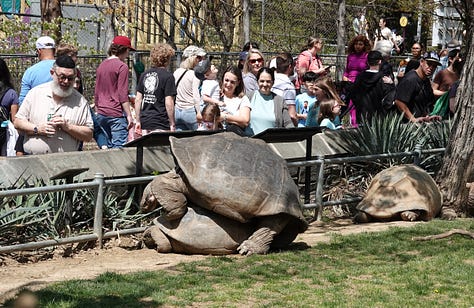
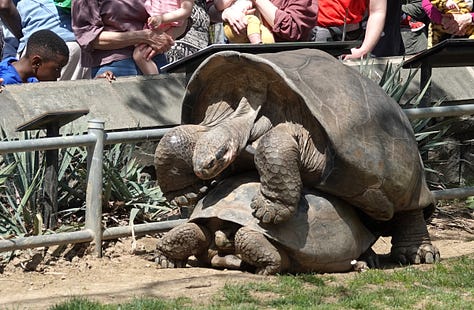
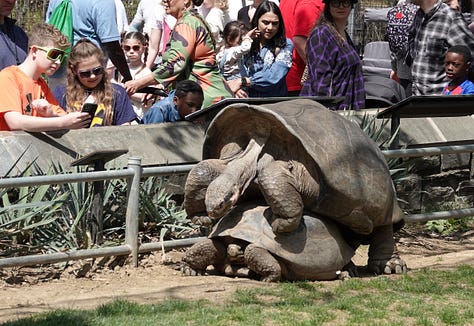
That Polar Bear at the Central Park Zoo, who was swimming in endless circles, is another matter. And let’s not talk about Flaco the owl or Harambe the gorilla. Bad things happen. If I could make us all live sustainably and use restorative farming, I would. I ate fake eggs this morning, but I’m using a service to get this to you that likely rents space on enormous server farms that consume immense amounts of water and electricity. One does what one can.
We visited on Good Friday, which as someone who was raised Catholic, was a name that always seemed rather relative. It was also Spring Break, and a warm day in a season that has been stingy with them, so it was quite crowded, but not overly so. We got to see the snoozing cheetahs, lions, tigers, and leopards. Cats are gonna cat.
The Giant Otters were also napping, cuddling together as otters do. I’ve been following Charlie Hamilton James’s memoir at
and in the chapter where he visits the Amazon River, he mentioned how they seemed to be taking care of one another nearly every minute of the day. I’m sure the Internet has told you that Sea Otters hold hands as they sleep, to keep from drifting apart; they’re affectionate creatures.I recently finished re-reading Gavin Maxwell’s memoir of keeping a wild otter from the marshes of Iraq at his cottage on the western coast of Scotland, Ring of Bright Water. It never made me want to keep one as a pet, but it made me appreciate them, as did Tarka the Otter by Henry Williamson. Like the fox, they won’t pass up caged chickens, and thus inspire a vicious hatred from farmers and fishermen, who hunted them with dogs. Maxwell’s otter Mijbil met a similar end, when a truck driver pulled over and murdered him with a pickaxe for his fur, then tossed the body into a river when villagers told him he killed a beloved pet.
From a young age, I’ve often been puzzled by what makes people do the things they do. I can’t say I’ve never been cruel to an animal; when I was a child, I once let my fear of snakes convince me that killing a harmless rat snake was a good thing to do. Instead of yelling at me, an adult told me, “why don’t you just leave it alone?” and that has stuck with me.
I hope to see otters on the Isle of Skye this year, and puffins on a boat trip, but I will bring my long range binoculars and Leave Them Alone. Birders have begun to be more protective of certain species, such as owls, which can be stressed by the crowds who show up to ogle them.
Speaking of birds, due to Avian Flu, also running rampant under the new administration, the tropical bird sanctuary was mostly closed. However, I did get to see an Asian Magpie, a beautiful blue-winged species, and peeked at a Bird of Paradise. I’m not fond of birds being kept by zoos, because I’ve yet to see an enclosure that looked like a day spa for birds. There was a European Starling nesting above the zebra and rhinoceros in a hole in a tree limb; that bird chose to be there. So did the House Sparrow who lighted on another tree, and the Turkey Vulture who flew over the zoo, perhaps hoping to find the carcass of a wildebeest.


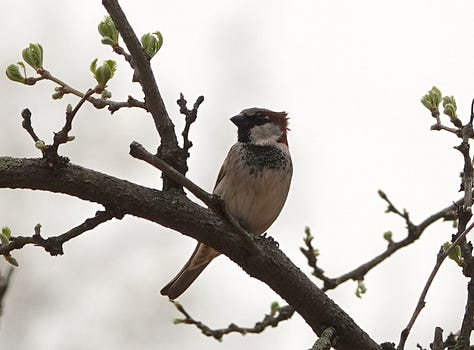
For example, rhinos don’t deserve to live in animal jail, but rich flaccid old men want their horns ground up so they can pretend it will make them as passionate as Abruzzo the tortoise. If you poisoned the horns taken by poachers, you are more likely to be prosecuted than the people consuming it, so there’s not much to be done. Some of the few rhinos left have armed guards. This one has some zebra lady friends; I’ve heard that male zebras can be so aggressive that they can’t be kept with others. Perhaps that’s why Laverne and Shirley here are the rhino’s pals.
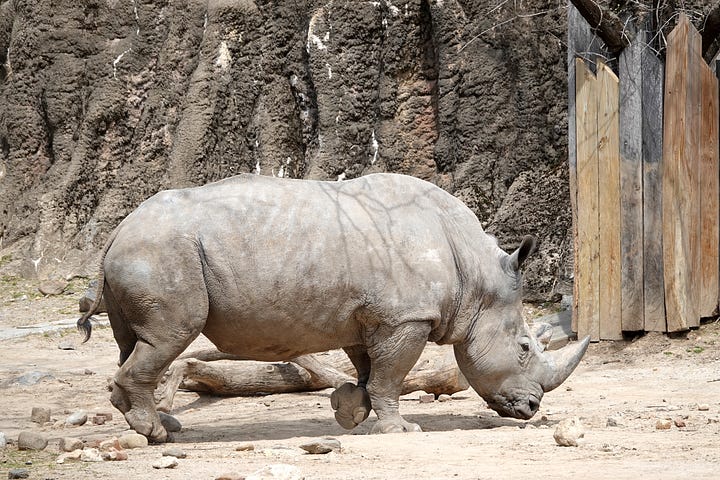
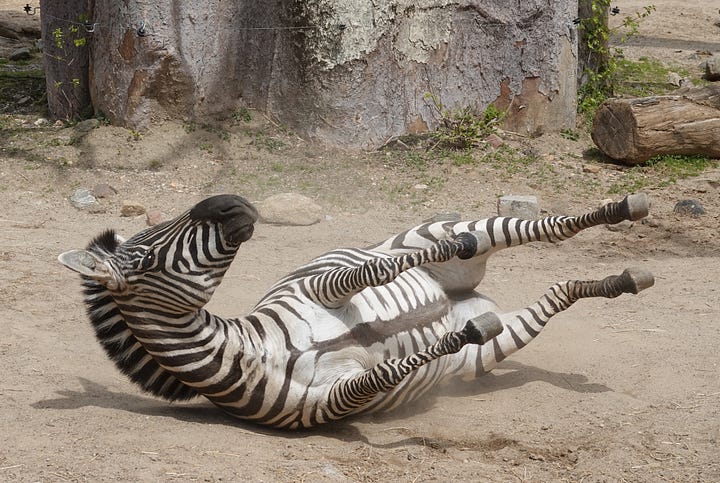
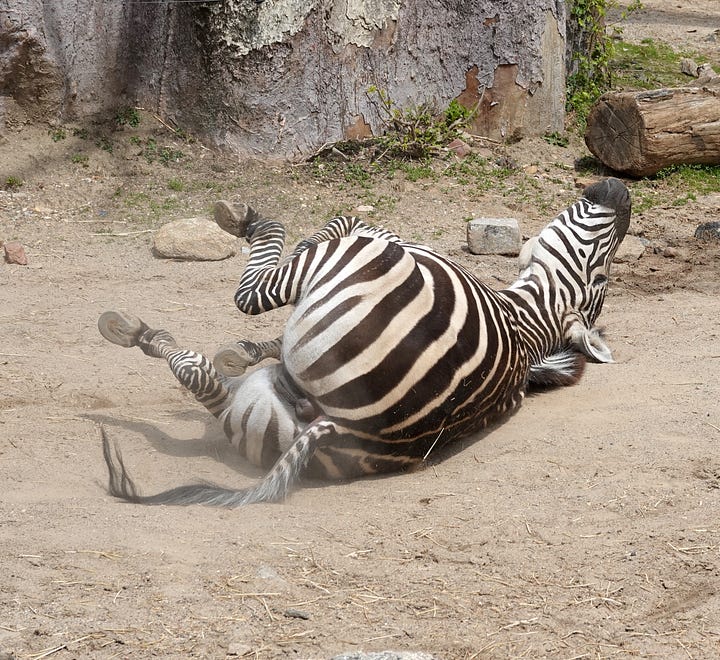

I always liked Adrian Belew’s song about a rhino in a zoo, safe but lonely. Give it a listen if you are so inclined.
Finally, I’m including this one because I’ve always loved giraffes. Their name is fun to say; they look clumsy when stuffed in small enclosures, but their silent grace becomes apparent when watching the gallop in the wild, or carefully browse leaves from trees with that enormous tongue. They can kick lions to death with their huge hooves, or you, for that matter, if they are so inclined. Many zoos let you feed them lettuce leaves, and there is something peaceful about feeding this enormous stretched and pentagon-patterned ungulate.
This one was patiently waiting for a lettuce leaf. They had a slightly larger enclosure at the Turtle Back Zoo, where I fed them, but they looked happier and healthier here. They never seem to have enough space for those long legs; I’ll have to visit the Bronx Zoo this year and see.
Do you have a favorite zoo?

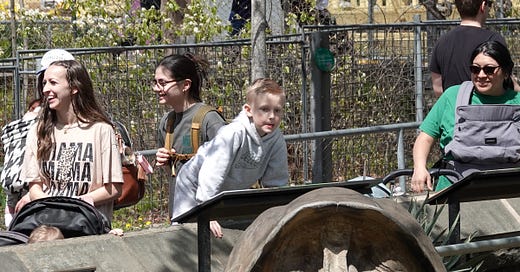



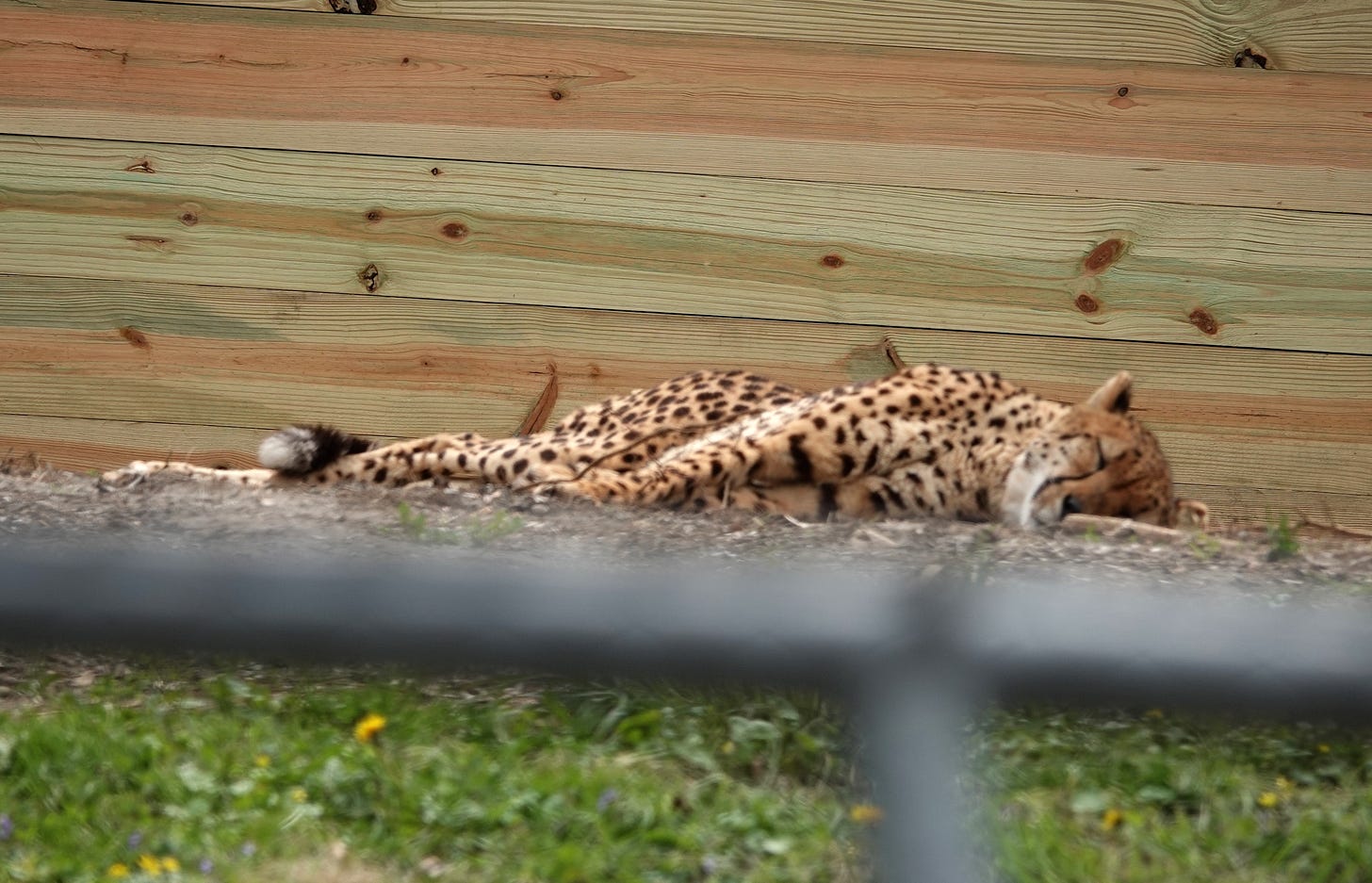
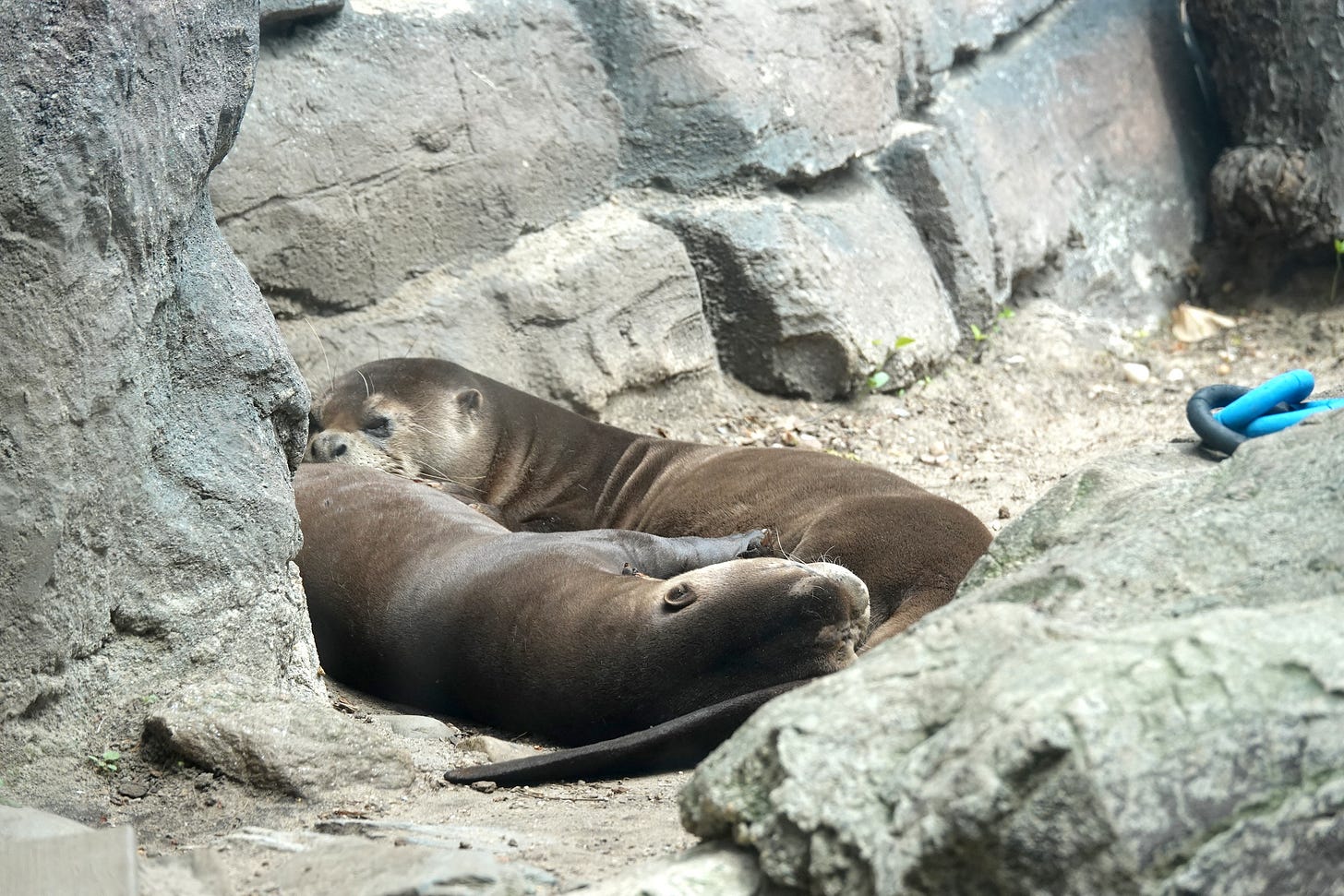
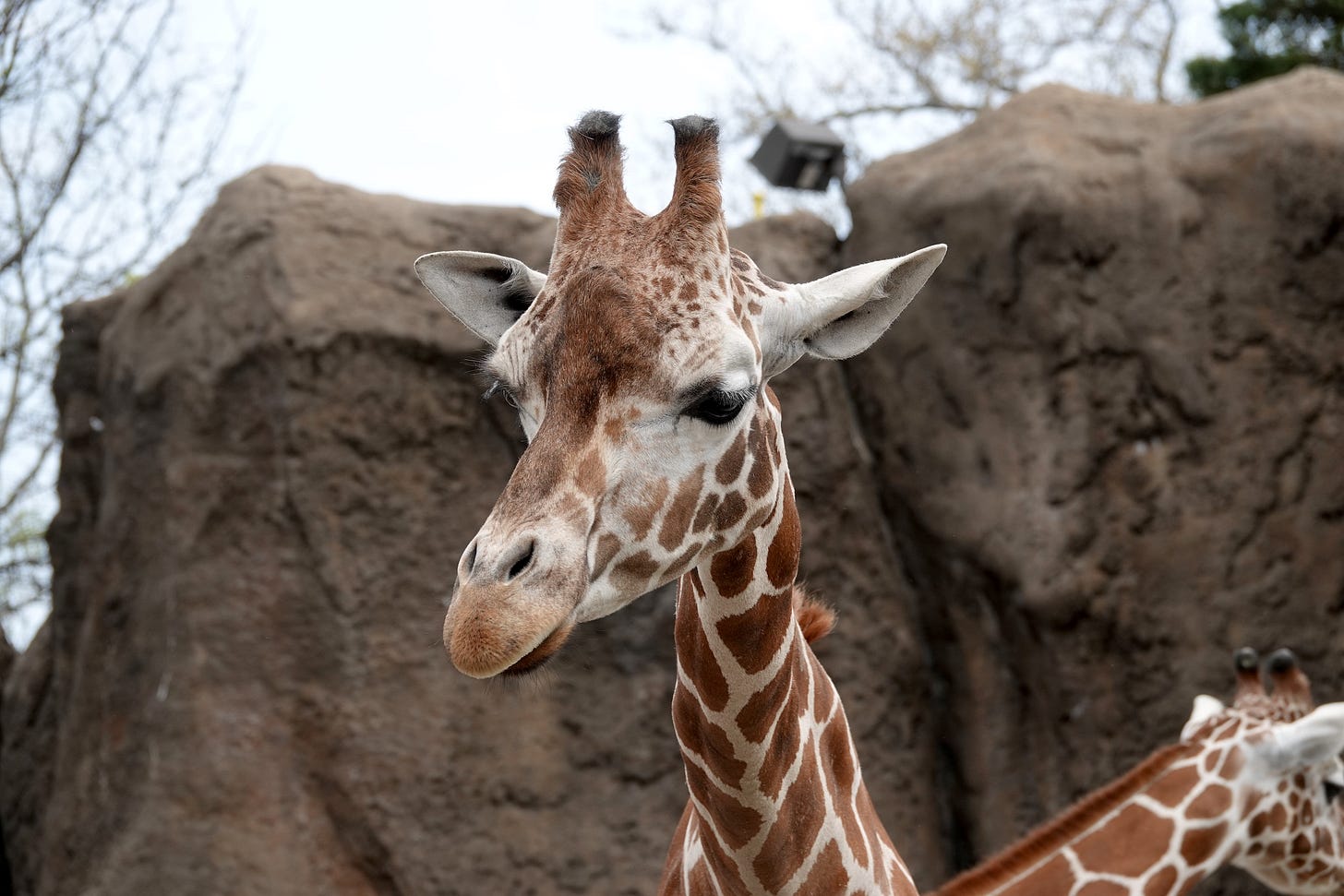
Trolls on tortoise chat boards say that males are biologically programmed to pick mates under the age of 60, but the wise tortoises know that at the age of 100, they’re just getting going.
(Seriously, that’s a great sighting & I think the San Diego zoo although I’ve only been there once)
No favorite zoo. But I love giraffes too. Great photos.